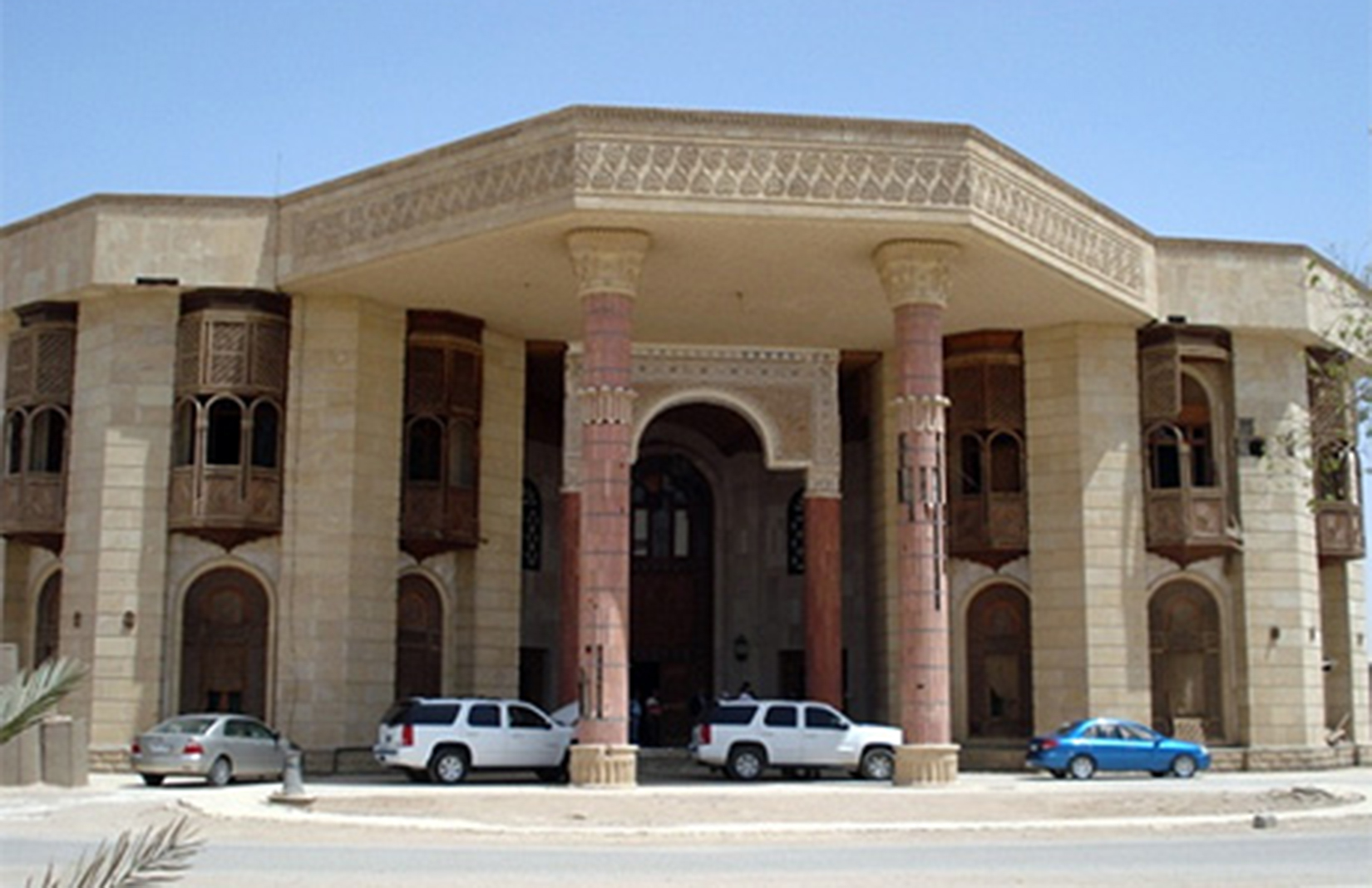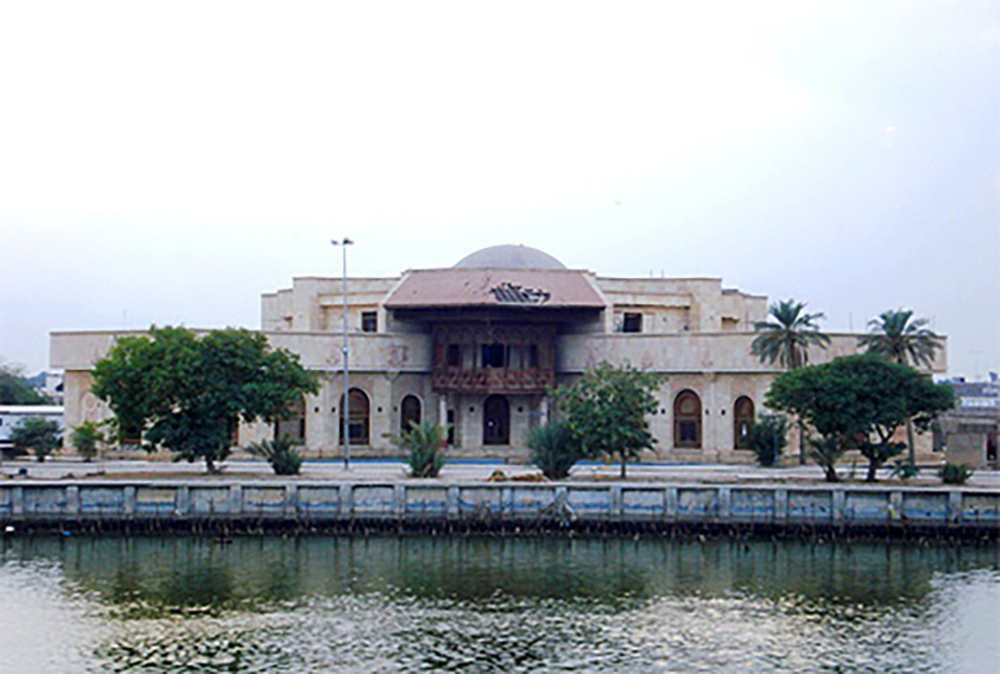
Courtesy of Friends of Basrah Museum
Saddam Hussein’s Lakeside Palace has become a museum for antiquities in the city of Basra.
The Basrah Museum has moved into the mock-Rococo structure – one of nearly 100 opulent residences the dictator built during his reign of terror – filling its rooms with artifacts dating back to 400 BC.
Many of Hussein’s palaces – built for his family and mistresses, as well as friends and officials – were repurposed as army barracks during the Iraq war, including the Lakeside Palace which overlooks the Shatt al-Arab waterway. It was abandoned in 2003 and taken over by the British Army, which used it as a mess hall until 2008.

After several years petitioning the Iraqi government, the country’s State Board of Antiquities and Heritage for Basra reclaimed the palace in 2010.
It called in help from the British Museum and UK charity Friends of Basrah Museum to fund the building’s restoration, which is expected to cost over £3m and will happen in phases.
The first of its new galleries opened on 27 September 2016, beginning a new chapter in the building’s tumultuous history. Three more galleries are planned in the coming years as the palace is gradually rehabilitated.
Basrah Museum director Qahtan al-Obaid told the Associated Press he hoped the building’s new role would ‘replace the themes of dictatorship and tyranny with civilisation and humanity’.
Read next: DGT Architects turn a disused military base into the Estonian National Museum






















